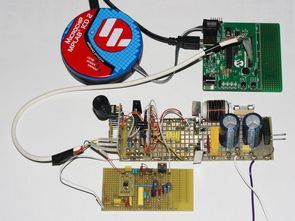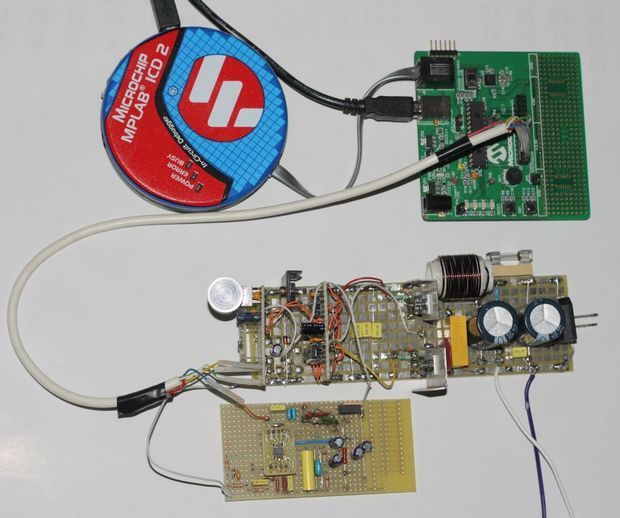
Nowadays, a home cinema system is present is almost every household. Their price range is very wide – from $100 to tens of thousands of dollars. Usually, the subwoofer of a low or middle end system is small so it needs to be with ported design to achieve reasonable response in low frequencies. For movies this seems to be allright, because the subwoofer is used for effects. For playing music, though, the ported design is a problem – it has greater total harmonic distortions (THD) and group time delay than the closed box.
To have good bass response in a relatively small closed box subwoofer, speaker driver is usually pushed to its limits where it has high THD. In this project one very interesting approach is used for reduce the distortions of the speaker and also to extend its bass response. A dual coil speaker driver is used but only one of the coils is connected to the power amplifier – the other is used for electromotive feedback. This method is not new, but is difficult to implement in pure analogue world because of the many parameters that have to be tuned. For easier experimenting and tuning, a dsPIC30F2020 device is used. It not only implements a Proportional-Integral-Derivative controller for the feedback, but with its powerful SMPS controller and ADC drives a ClassD amplifier for the subwoofer! This type of amplifier, called also “digital” amplifier uses pulse-width modulation (PWM) to drive power transistors in switching mode.

The main benefit is the losses are very small compared to the ClassAB power amplifier. The heat dissipated and more power can be transferred to the speaker driver with only small heatsinks used. Two of the bonus parts for the contest are used – the dual MOSFET driver TC4427A (here used for fast level shifter) and the dual low-noise operational amplifier MCP6022 (used for input and feedback signal amplification and filtering). Also, for easing the design process, the 28-pin Starter Board together with the ICD2 programmer was used. Author: Alexander Popov & Jordan Popov

dsPIC30F2020 Class D Subwoofer Amplifier
FILE DOWNLOAD LINK LIST (in TXT format): LINKS-21815.zip
Published: 2012/04/12 Tags: dspic projects, microchip projects, microcontroller projects
Microchip dsPIC30F6014 Alert Driver System
The purpose of the novel Alert Driver System is to keep drivers safe at the wheel. The Microchip dsPIC30F6014 based system can detect if a driver is paying attention to the road or falling asleep by measuring his head’s tilt angles. The system can issue an alert if it detects erratic movement
While I am sure major auto makers and NASA are working on this problem, and maybe even the luxury cars already have such a system in place, I built this prototype version shown in Photo 1 in order to carry out experimentation during my long commute. I used the Microchip dsPIC 1.1 Development Board for the data collection, real-time graphics LCD display and algorithm processing and a my own designed Motor Controller Board, which uses a dsPIC30F4011 to drive the road grating noise generator motor attached to the driver’s seat.
Evaluation Kit. In addition I used a Freescale Zigbee based wireless SARD X,Y and Z accelerometer board to measure the driver’s head orientation. The system consists of the vehicle operator wearing a baseball cap or headband with the X-Y and Z accelerometer mounted or clipped on while running the Freescale TRIAX application. The Driver Alert Module processes data and transmits it to the embedded dsPIC30F6014 Driver Alert Controller via the serial RS-232 interface during drives.